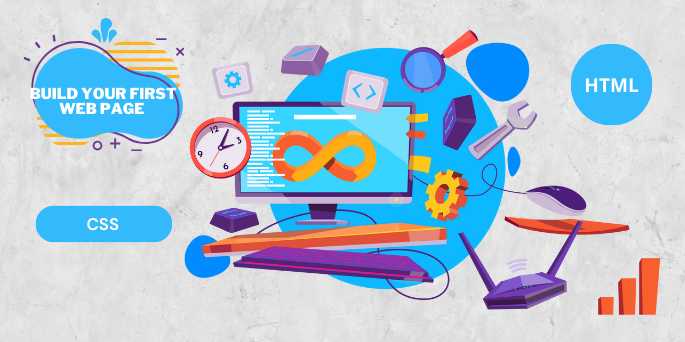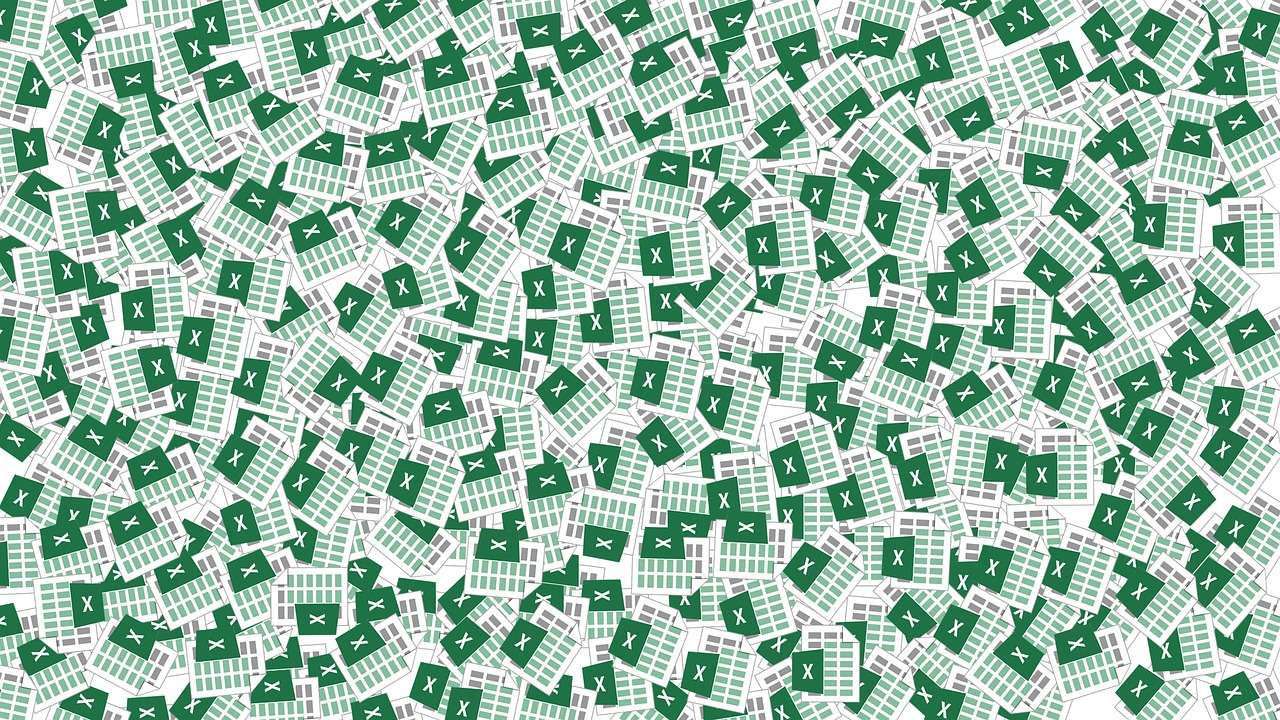Embark on a journey of knowledge! Take the quiz and earn valuable credits.
Take A QuizChallenge yourself and boost your learning! Start the quiz now to earn credits.
Take A QuizUnlock your potential! Begin the quiz, answer questions, and accumulate credits along the way.
Take A QuizChapters
HTML + CSS: Build Your First Web Page — A Beginner’s Practical Guide

Overview
👋 Welcome to Web
Development: HTML + CSS from Scratch
Have you ever wanted to build your own website but didn’t
know where to start? Maybe you’ve looked at code and felt overwhelmed—or maybe
you're just curious how websites are created from scratch.
This guide is the perfect starting point for absolute
beginners. In just a few hours, you’ll learn the fundamental building
blocks of the web: HTML (HyperText Markup Language) and CSS
(Cascading Style Sheets). By the end, you'll not only understand how web pages
work, but you’ll also have built your very own live, styled web page—from
scratch.
No prior coding knowledge? No problem.
No expensive software needed. Just your browser and a text editor.
Whether you're a student, aspiring developer, digital
marketer, graphic designer, or simply curious about how the internet works,
this tutorial will equip you with essential front-end web development skills
and the confidence to keep learning.
🧱 What Are HTML and CSS?
Before diving in, let’s clarify what each technology does:
🔹 HTML (HyperText Markup
Language)
HTML is the structure of your webpage. It organizes
the content like:
- Headings
- Paragraphs
- Images
- Links
- Lists
- Buttons
Think of it as the skeleton of a web page.
🔹 CSS (Cascading Style
Sheets)
CSS is the style of your webpage. It makes things
look pretty:
- Colors
- Fonts
- Layout
- Spacing
- Animation
Think of it as the clothing and makeup that styles
your HTML skeleton.
Combine HTML and CSS and you've got your first
professional-looking website.
💡 Why Learn HTML + CSS?
Here are a few reasons why learning HTML + CSS is
valuable—even if you're not becoming a full-time developer:
- ✅
Build personal or portfolio websites
- ✅
Gain control over WordPress, Wix, or other site builders
- ✅
Understand how digital marketing pages work
- ✅
Customize templates and themes
- ✅
Start freelancing or side projects
- ✅
Form a solid foundation for learning JavaScript, React, or Webflow
🛠️ What You’ll Learn in
This Guide
We’ll walk through every essential concept with examples and
simple explanations:
|
HTML Topics |
CSS Topics |
|
Basic page
structure |
Inline, internal &
external CSS |
|
Headings and paragraphs |
Selectors,
classes, and IDs |
|
Links, images, and
lists |
Colors, fonts, and
backgrounds |
|
Semantic tags (header, nav) |
Box model
& spacing |
|
Forms and input
elements |
Flexbox & layout
techniques |
At the end, we’ll build a complete, responsive web page
combining everything you've learned.
⚙️ Tools You Need
No complex software here. You only need:
- A
Web Browser – Chrome, Firefox, Edge
- A
Text Editor – VS Code (recommended), Sublime Text, or Notepad
- A
Willingness to Experiment – Don’t be afraid to break things and try
again
📄 The Big Picture: How
the Web Works
Before we start coding, let’s take a step back and
understand the journey of a web page:
- You
enter a URL like www.example.com
- The
browser requests files from a server
- The
server sends back HTML, CSS, and other files
- The
browser renders these files visually
- You
see a complete web page!
This simple flow powers everything from your favorite blogs
to social media platforms and online stores.
🔍 Real-World Analogy:
Building a House
- HTML
is like the blueprint + walls + windows of your house
- CSS
is the paint, decorations, furniture
- Later
on, JavaScript will act as the electricity and plumbing that
makes the house interactive
🧱 HTML: The Foundation
Layer
Here’s what basic HTML structure looks like:
html
<!DOCTYPE html>
<html>
<head>
<title>My
First Web Page</title>
</head>
<body>
<h1>Welcome
to My Website</h1>
<p>This is
my very first web page using HTML and CSS!</p>
</body>
</html>
Key Tags:
|
Tag |
Purpose |
|
<html> |
Root element |
|
<head> |
Metadata
(title, links) |
|
<body> |
Visible content |
|
<h1> to <h6> |
Headings |
|
<p> |
Paragraph |
|
<a> |
Link |
|
<img> |
Image |
|
<ul>/<ol> |
Lists |
🎨 CSS: Styling the
Structure
Let’s add some simple style:
html
<style>
body {
background-color:
#f0f0f0;
font-family:
Arial;
color: #333;
}
h1 {
color: teal;
}
</style>
You can include CSS:
- Inline:
style="color:red"
- Internal:
<style> tag in HTML <head>
- External:
Separate .css file linked in HTML
🖥️ Your First Web Page
Plan
We’ll build a simple portfolio website with:
- A
hero section
- About
section
- Contact
form
- Navigation
links
- Responsive
layout (mobile-friendly)
🔗 HTML + CSS Workflow
Here’s how a typical project is structured:
|
File |
Purpose |
|
index.html |
Main HTML page |
|
style.css |
External
styles |
|
/images |
Folder for images |
|
/scripts (optional) |
JS files for
future use |
📈 What’s Next After This?
Once you've mastered HTML and CSS, you can explore:
- JavaScript
– Add interactivity like sliders and pop-ups
- Git
& GitHub – Share your projects and collaborate
- Responsive
Design – Make pages adapt to mobile screens
- Frameworks
– Bootstrap, Tailwind CSS, etc.
- Web
Projects – Build a blog, portfolio, or e-commerce mockup
🚀 Summary: What You'll
Walk Away With
By the end of this hands-on tutorial series, you’ll:
- Understand
how the web is built
- Know
how to write clean HTML and CSS
- Have
built your own mini-website
- Be
able to experiment confidently with new layouts and styles
- Be
ready to take on more advanced tools and languages
🧠 Final Thoughts
HTML and CSS might seem basic, but they are the backbone
of the modern web. Every professional site, app, and platform starts with
this duo. By learning to build your first web page, you're not just learning
code—you're learning how to speak the language of the internet.
The best way to learn? Code along. Break things. Fix
them. Repeat.
Let’s start building your very first website.
FAQs
Q1: What is the difference between HTML and CSS?
A: HTML (HyperText Markup Language) is used to structure the content of a webpage—such as text, headings, links, and images. CSS (Cascading Style Sheets) is used to style that content—like setting colors, fonts, spacing, and layout.
Q2: Do I need to install any special software to write HTML and CSS?
A: No special software is required. You can use any text editor like Visual Studio Code, Sublime Text, or even Notepad. All modern browsers can render your HTML and CSS code.
Q3: Can I build a complete website with just HTML and CSS?
A: Yes, you can build a static website using only HTML and CSS. However, for interactive elements like animations or forms with validation, you'll eventually need JavaScript.
Q4: How do I view my HTML page in a browser?
A: After saving your file with a .html extension, simply double-click it or right-click and select “Open with” → your browser (e.g., Chrome, Firefox, Edge).
Q5: What is the best way to apply CSS to an HTML page?
A: The best practice is to use an external CSS file (linked with a <link> tag in the HTML <head>). This makes your code modular, clean, and easier to maintain.
Q6: Is it better to learn HTML and CSS before JavaScript?
A: Yes. HTML and CSS provide the structural and visual foundation of web development. Learning them first helps you understand how websites are built before adding interactivity with JavaScript.
Q7: How can I make my website responsive using HTML and CSS?
A: Use CSS media queries, flexbox, and relative units like percentages or em/rem to make your layout adapt to different screen sizes (e.g., desktop, tablet, mobile).
Q8: Can I host my HTML + CSS website online for free?
A: Yes! Platforms like GitHub Pages, Netlify, and Vercel allow you to host static sites (HTML/CSS/JS) for free with custom domains and version control.
Q9: What’s the difference between class and id in CSS?
A: An id targets a unique element using #idname, while a class can be reused across multiple elements using .classname. IDs should be unique per page; classes can apply styles to multiple elements.
Q10: Where can I find design inspiration and examples for HTML/CSS projects?
A: Websites like CodePen, Dribbble, Frontend Mentor, and CSS-Tricks offer great examples, templates, and challenges to inspire and improve your front-end design skills.
Posted on 18 Apr 2025, this text provides information on HTML tutorial. Please note that while accuracy is prioritized, the data presented might not be entirely correct or up-to-date. This information is offered for general knowledge and informational purposes only, and should not be considered as a substitute for professional advice.
Similar Tutorials

Advanced Excel Charts Tutorial: How to Create Prof...
Learn how to create professional charts in Excel with our advanced Excel charts tutorial. We'll show...

Advanced Excel Functions: Tips and Tricks for Boos...
Are you tired of spending hours working on Excel spreadsheets, only to find yourself stuck on a prob...

Apache Flume Tutorial: An Introduction to Log Coll...
Apache Flume is a powerful tool for collecting, aggregating, and moving large amounts of log data fr...
Explore Other Libraries
Related Searches
Please allow ads on our site
Please log in to access this content. You will be redirected to the login page shortly.
Login
Join Our Community Today
Ready to take your education and career to the next level? Register today and join our growing community of learners and professionals.

Your experience on this site will be improved by allowing cookies. Read Cookie Policy
Your experience on this site will be improved by allowing cookies. Read Cookie Policy


Comments(0)